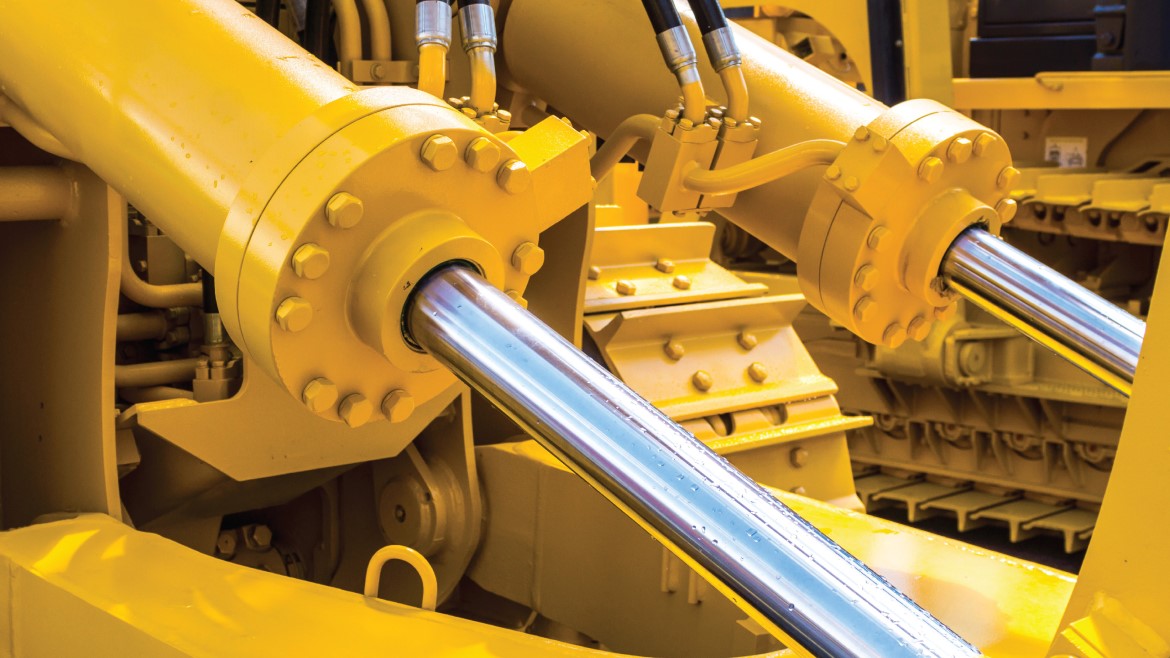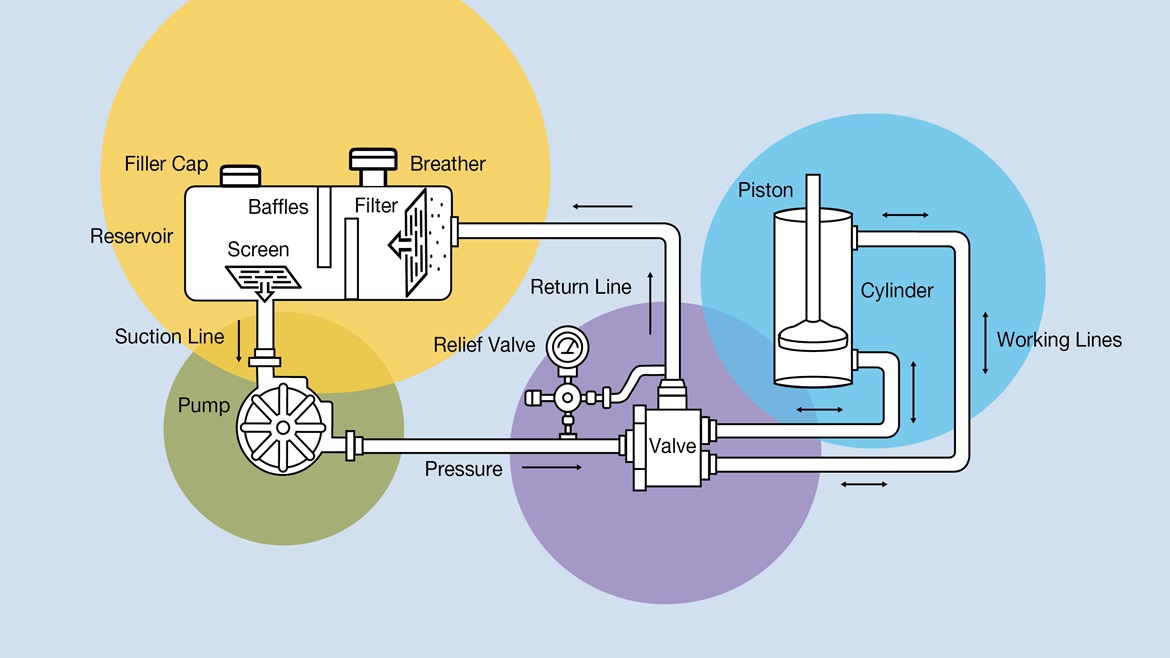How It Works - Hydraulic Systems

What are hydraulic systems?
Hydraulic systems (or simply “hydraulics”) refer to the transmission and control of power through pressurized fluids.
Where are hydraulic systems used?
Hydraulic systems are used in machines and equipment across various industries, including stationary (e.g., plastic injection molding equipment, hydraulic presses, trash compactors, etc.) and mobile (excavators, skid steers, wheel loaders, etc.) applications.
How do hydraulic systems work?
Hydraulic systems work based on the principle of Pascal’s law, developed in the 17th century by French mathematician and scientist Blaise Pascal. Pascal’s law states that pressure applied to an enclosed fluid will be transmitted without a change to every point of the fluid and to the walls of the container. The pressure at any point in the fluid is equal in all directions.
Engineers use Pascal’s law to design hydraulic systems to convert mechanical energy to fluid power. The key components in a hydraulic system are – the pump, motor, valves, hoses, filter, and reservoir.

Specifically, here’s how a hydraulic system works:
- An engine or electric motor powers a hydraulic pump, which is the “heart” of the hydraulic system.
- The pump pushes pressurized fluid through the hydraulic system and converts mechanical energy to fluid power.
- The pressurized fluid goes through various control valves to the hydraulic actuator.
- Hydraulic actuators consist of either a hydraulic cylinder (linear actuation) or a hydraulic motor (rotary actuation) that converts hydraulic power into mechanical power.
- The power produced through this process is then used to complete desired work.
What are the advantages and disadvantages of using fluid power via a hydraulic system?
Advantages:
- Force multiplication
- Ease of operation
- Power-to-weight ratio
- Variable speed and reversible
- Robust performance, yet compact
- Easy overload protection
- High pressure and power density
Disadvantages:
- Prone to contamination
- Fluid leakage
- Noise
- Requires dedicated maintenance
- Potential for fire hazard
Lubrication Needs of Hydraulics Systems
Today’s hydraulic systems work longer and harder than ever before. With all the increased pressure, key factors to consider when formulating hydraulic fluids include wear protection, thermal stability, corrosion protection, elastomer compatibility, oxidation of the fluid, and hydrolytic stability.
Related Articles
The Journey Towards a More Energy Efficient Hydraulic System
What Additive Components Are in Your Hydraulic Fluid